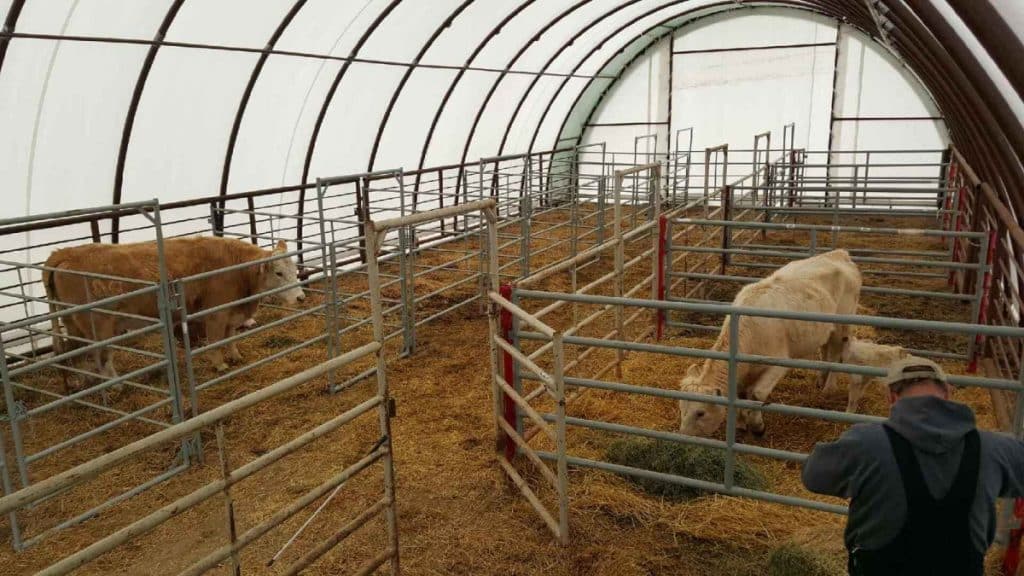Picture the best animal barn you can imagine, with all the design features and amenities a farmer could request. While many barn owners are limited by their budget, what you can do with an animal barn is limitless. It’s up to the farmer to decide how to design the layout and features of their barn and ensure their animals are comfortable.
This is at the center of any animal barn plan. You may want to incorporate animal barn ideas into your design.
Trench Drains
Sturdy trench drains are necessary for an animal barn. They must be able to bear heavy farm equipment and animals. Where wet animals gather, a trench drain can prevent messes from accumulating, ensuring sanitary and safe conditions.
Barn Curtains
Barn curtains are an alternative to wood or metal siding materials. They operate at their place, allowing farmers to control and customize ventilation, insulation, and lighting as needed. As barn curtains aren’t as rigid as other materials, you can consistently offer your animals the best barn conditions.
Custom Stall Walls
Your stall walls can be made of wood, prefabricated steel, or a mix. They can be simple or decorative. The walls can be solid or a combination of a solid partition on the lower hand and a grill across the top for more exposure. Consider what type of animal barn stall wall works best for your animals.
Use Natural Light for Lighting
Sunlight maintains animal health, regulates animal biorhythms for milk and egg production, and is sanitary. Use what you have in your barn and take advantage of natural light without sacrificing shelter.
Timer Lights
During dark hours, set up skylights and lights with a timer. This means you don’t need to worry about lighting, which can be helpful if you are breeding or showing. It also reduces your work by not having to go to the animal barn to turn on/off your night lighting.
Temperature Control
Animal barn temperature can be monitored by a thermostat and controlled through ventilation systems, natural and mechanical. Mechanical systems kick on during discomfort, hot or cold. There are many ways to control temperature, including heat boxes, fans, and passive solar.
Insulation and Breathability
A barn should be properly insulated and breathe. Regarding ventilation, this means having a high-pitched roof, vented eaves, cupolas or ridges, and potentially an open ceiling or sliding door to allow for easy and natural air circulation.
Let’s say your barn will store hay, and you want to ensure vehicles can access the barn. Plan entrance sizes for large and small farm equipment accordingly, depending on what will occur in your animal barn.
Limestone Stall Bedding
Crushed limestone in a small mesh screening is considered the gold standard in livestock stall base material. It drains well, packs tightly, and remains porous. Limestone is also a natural disinfectant that keeps odours at bay.
Interlocking Rubber Mats
A set of interlocking rubber mats is a smart addition to an animal barn as it protects the ground surface from pawing and provides added cushioning. In addition, the interlocking rubber mats prevent the animals from accidentally shifting or pulling up.
Scaling for Future Expansion
You may want to double or triple your livestock count in the future. If you still need space in your animal barn, consider how to expand your animal barn.
Heated Waterers
Livestock need large amounts of water. Your animals will stay healthy and hydrated if you have an automated and heated water trough or heated water. This way, even in winter, the animals in your barn always have access to fresh, clean water.
Accessible Feeders
Many animal barns use feeders outside the stall. This could be a rotator filled with hay and grain from the outside and then rotated into the stall for the animals. This allows you to restock feed quickly and at your own pace, saving time.
Video Surveillance
To monitor your animals 24/7, install security cameras set to record continuously, which you can access from your smartphone whenever you like. This is an excellent investment for any farmer or animal barn owner. Keep an eye on your animals from wherever you are, avoiding waiting in the barn for mares to foal or give birth.
Use Solar Power for Electricity
A viable option for powering your animal barn is solar power. Though solar panels have an upfront cost, they could potentially save significant money on electricity in the long term, even over the years to follow.

